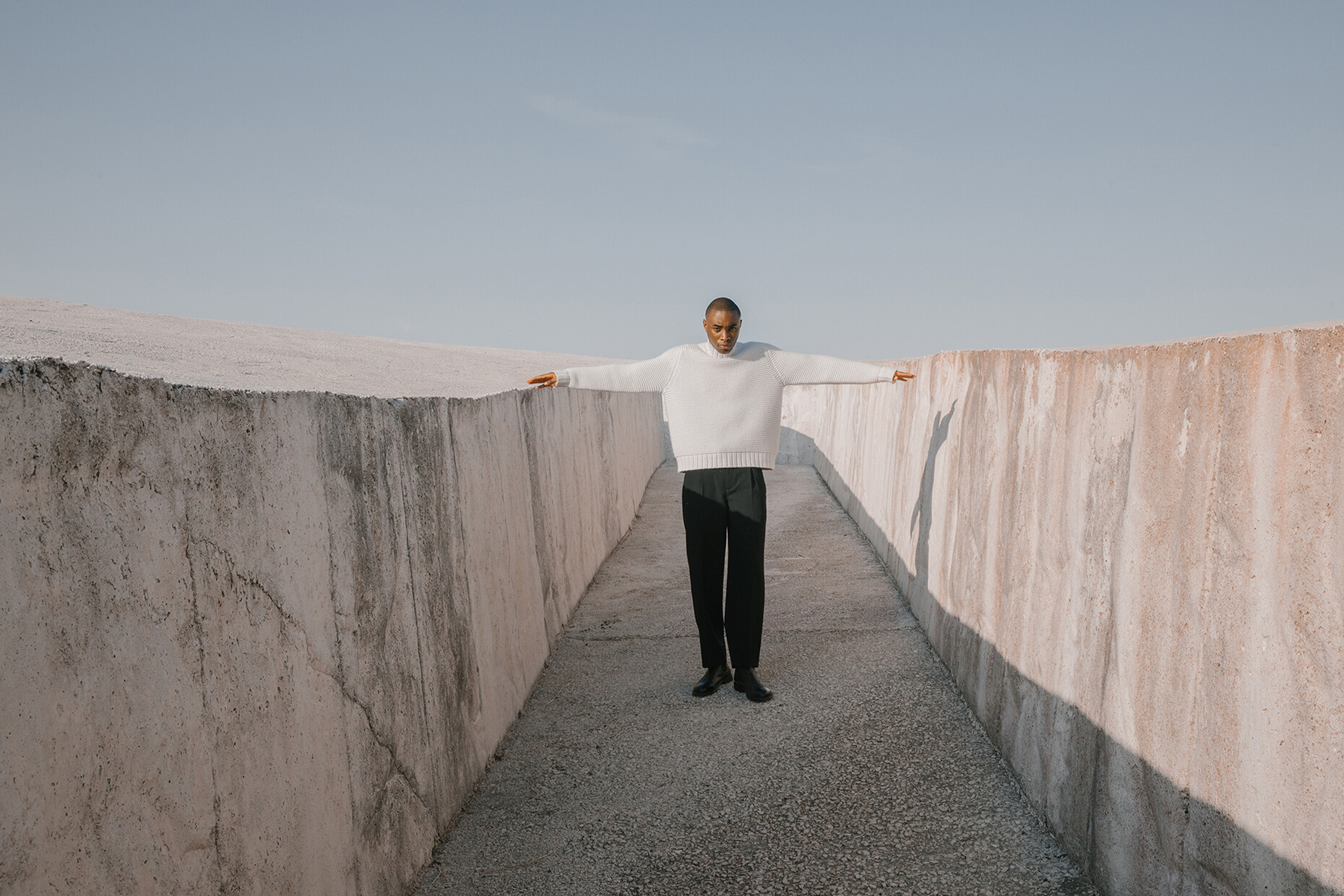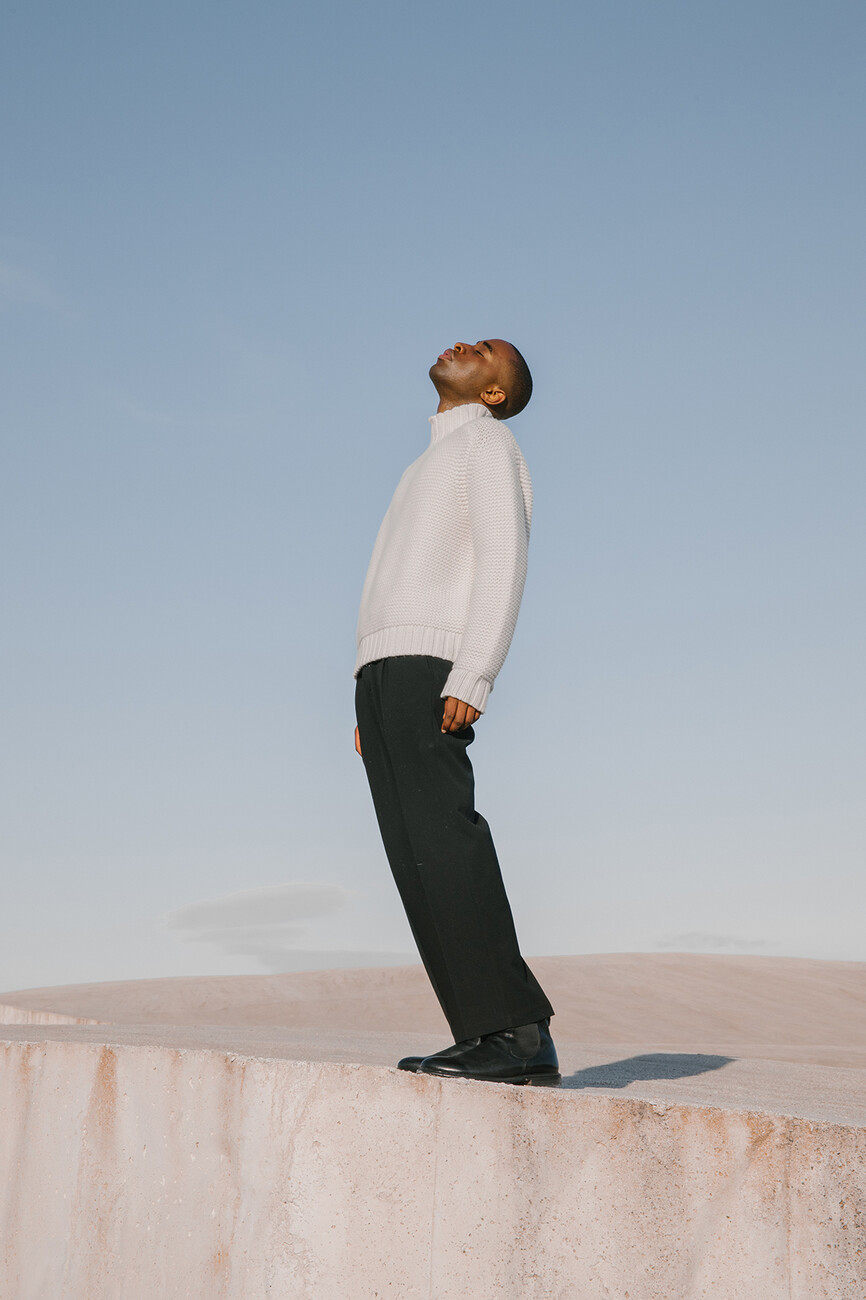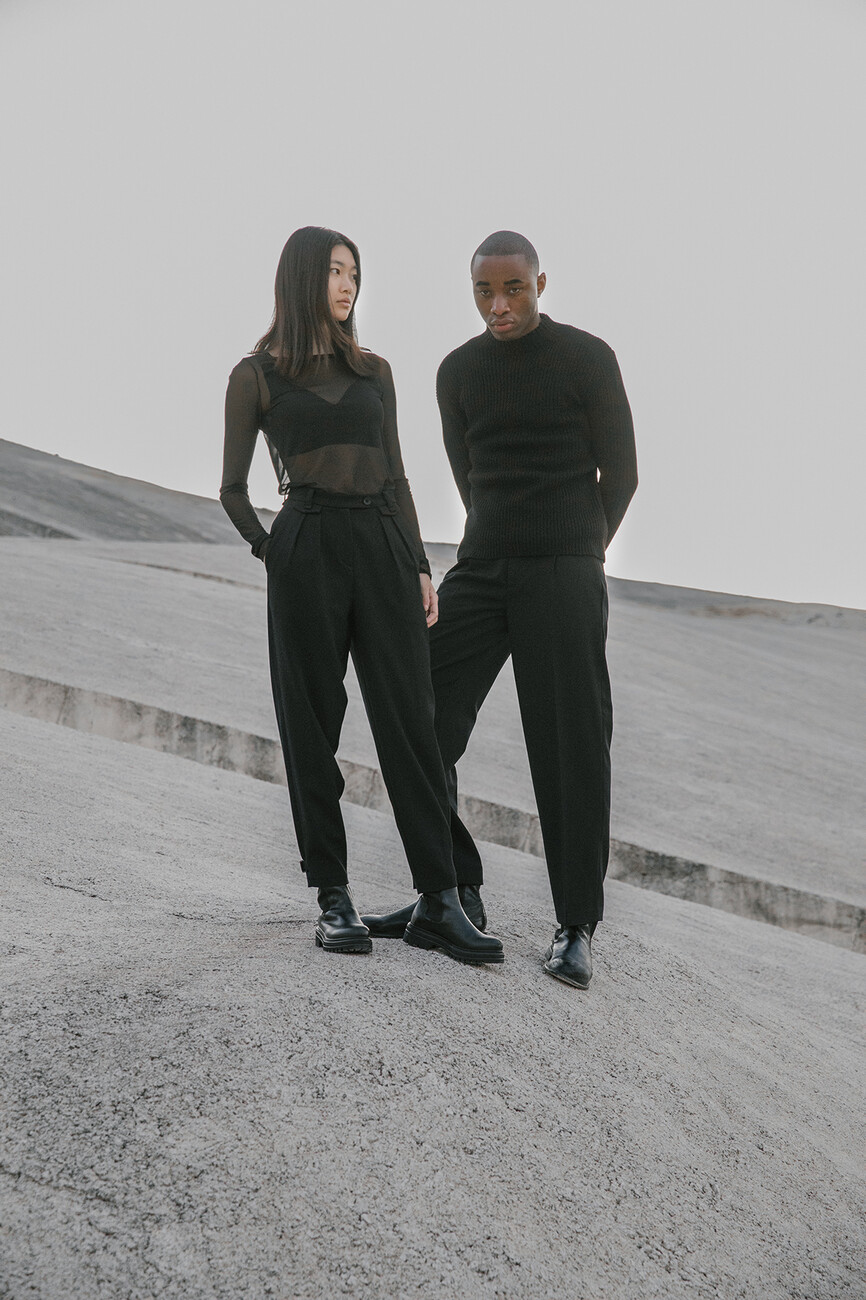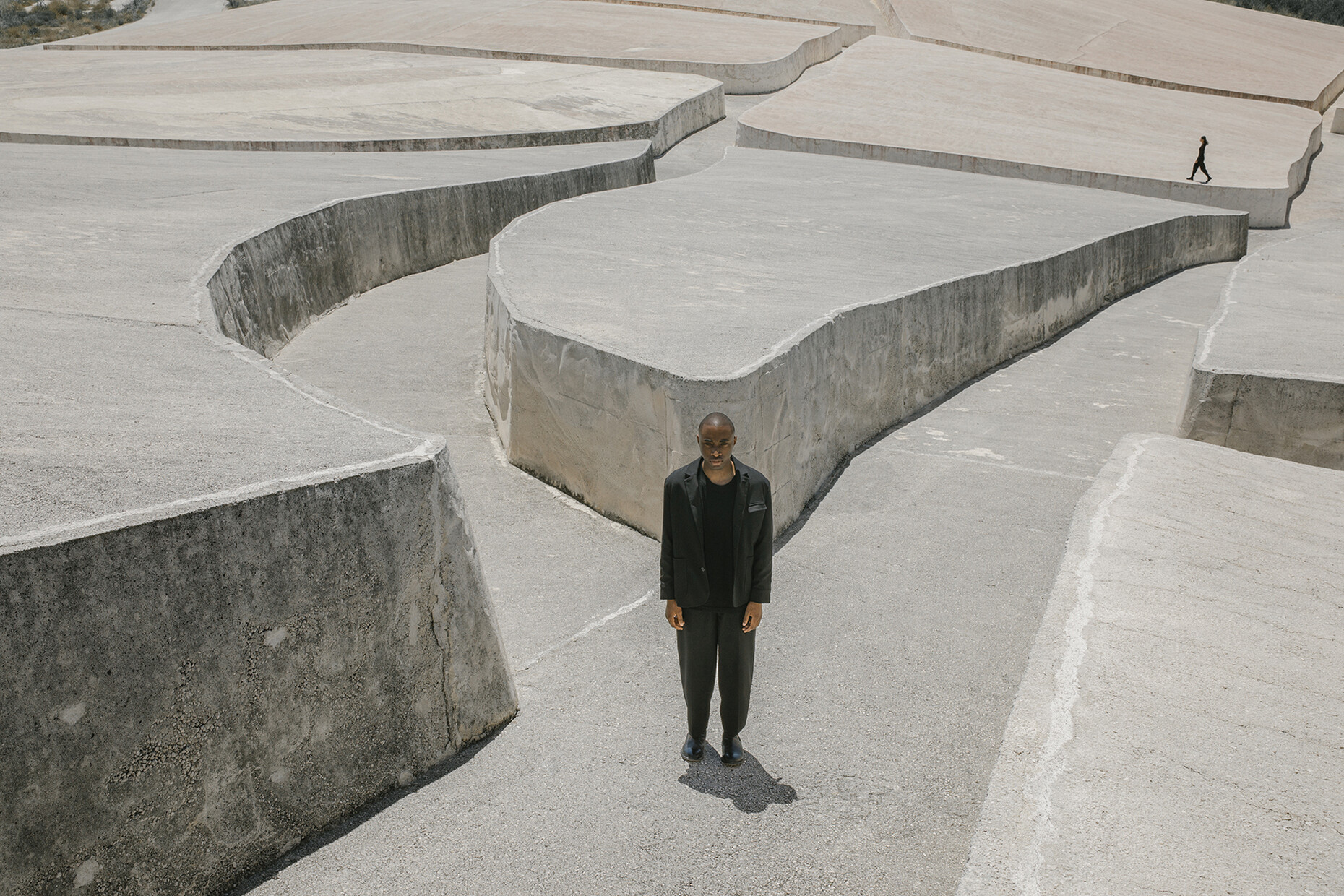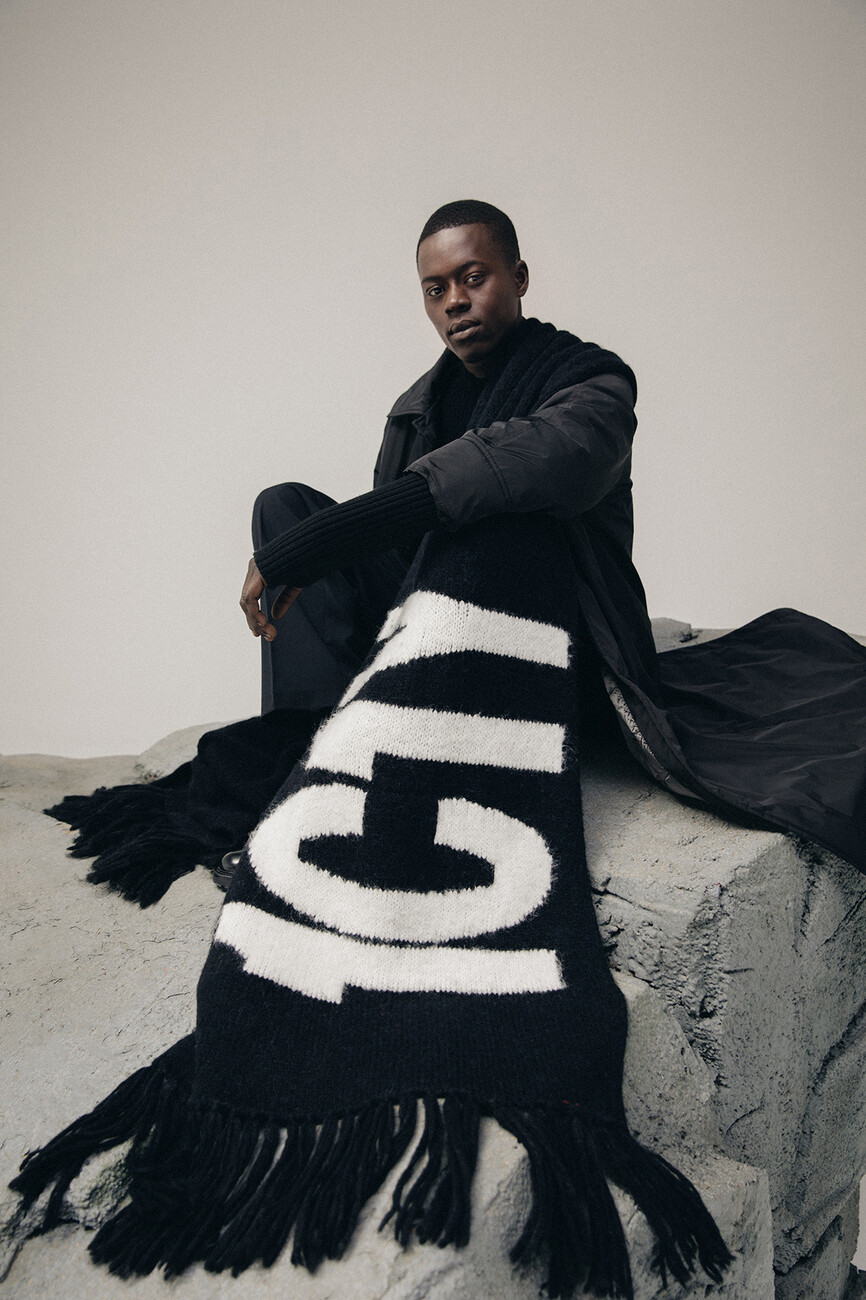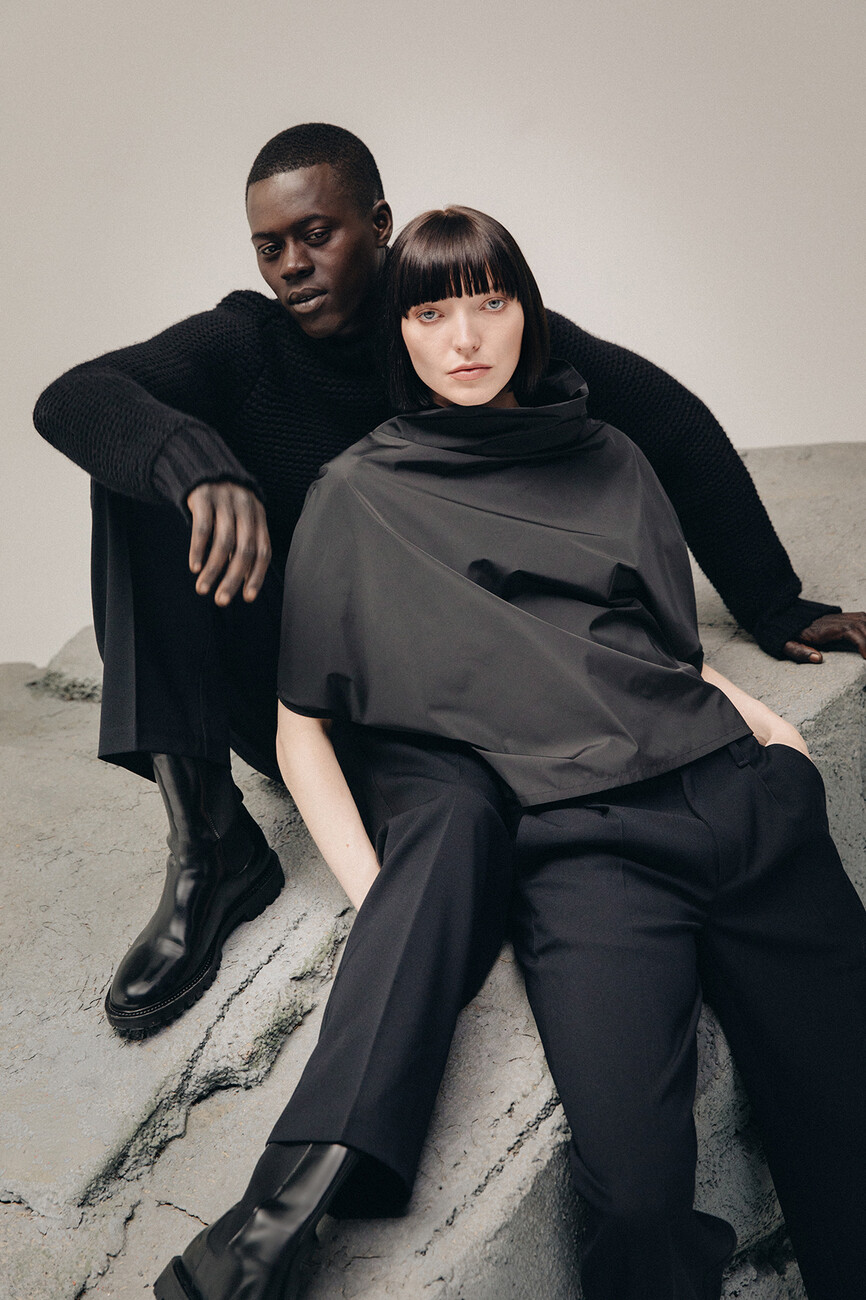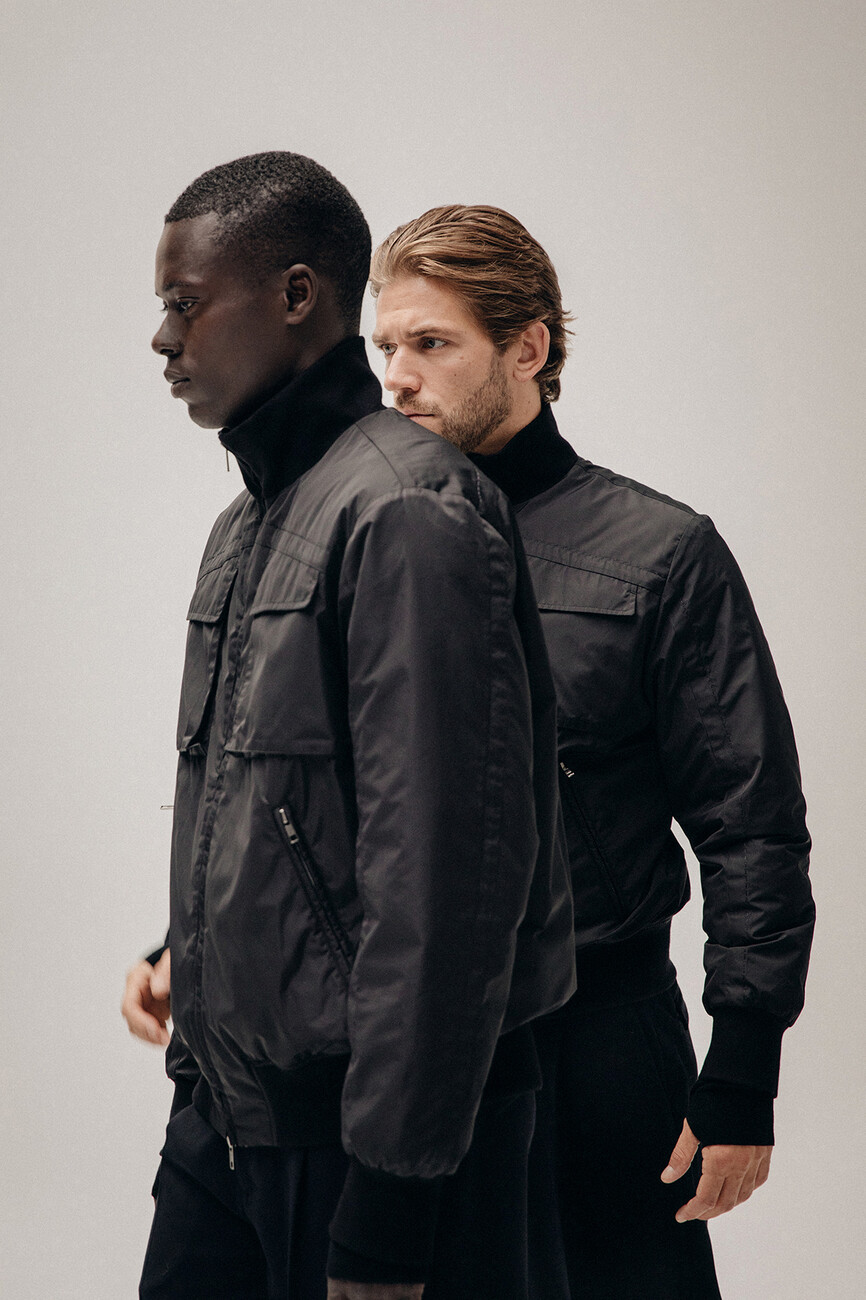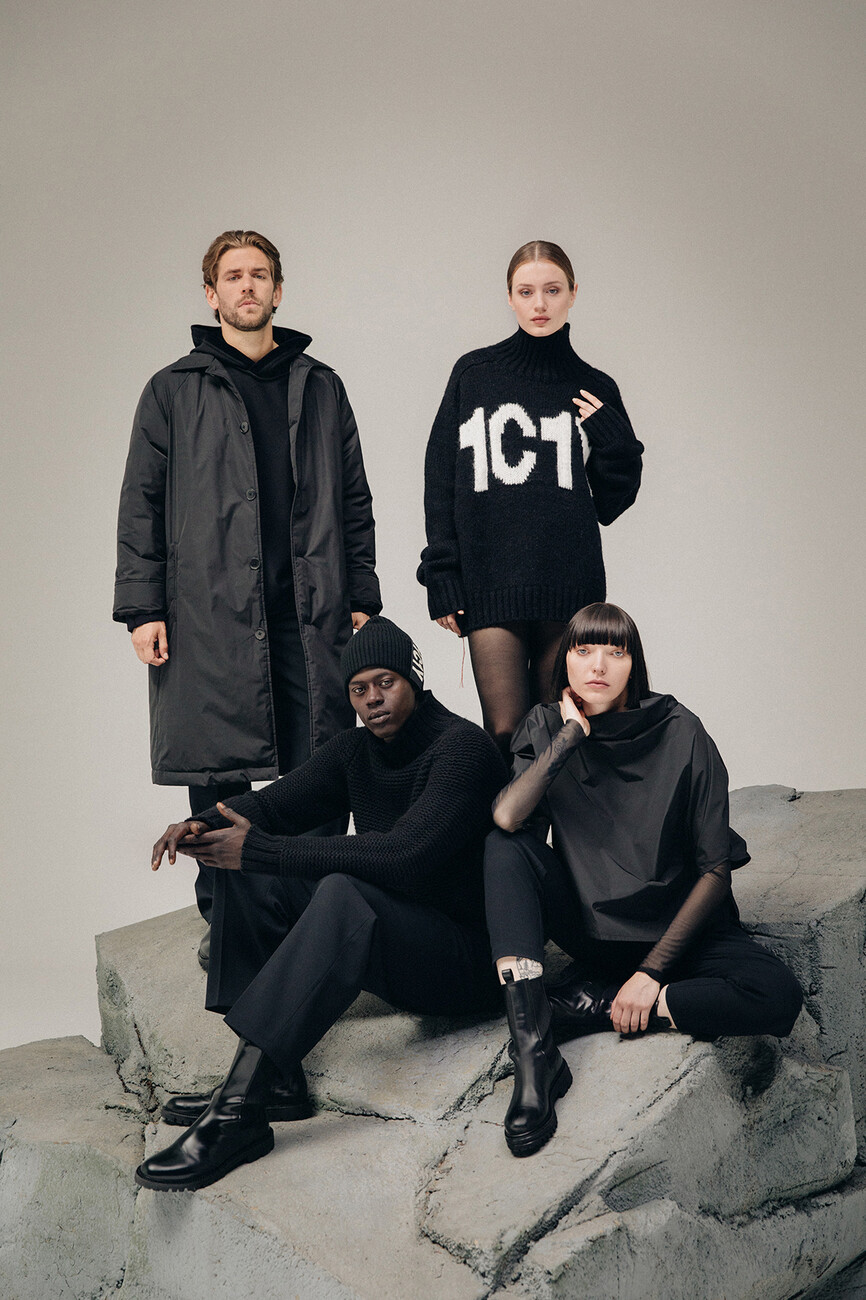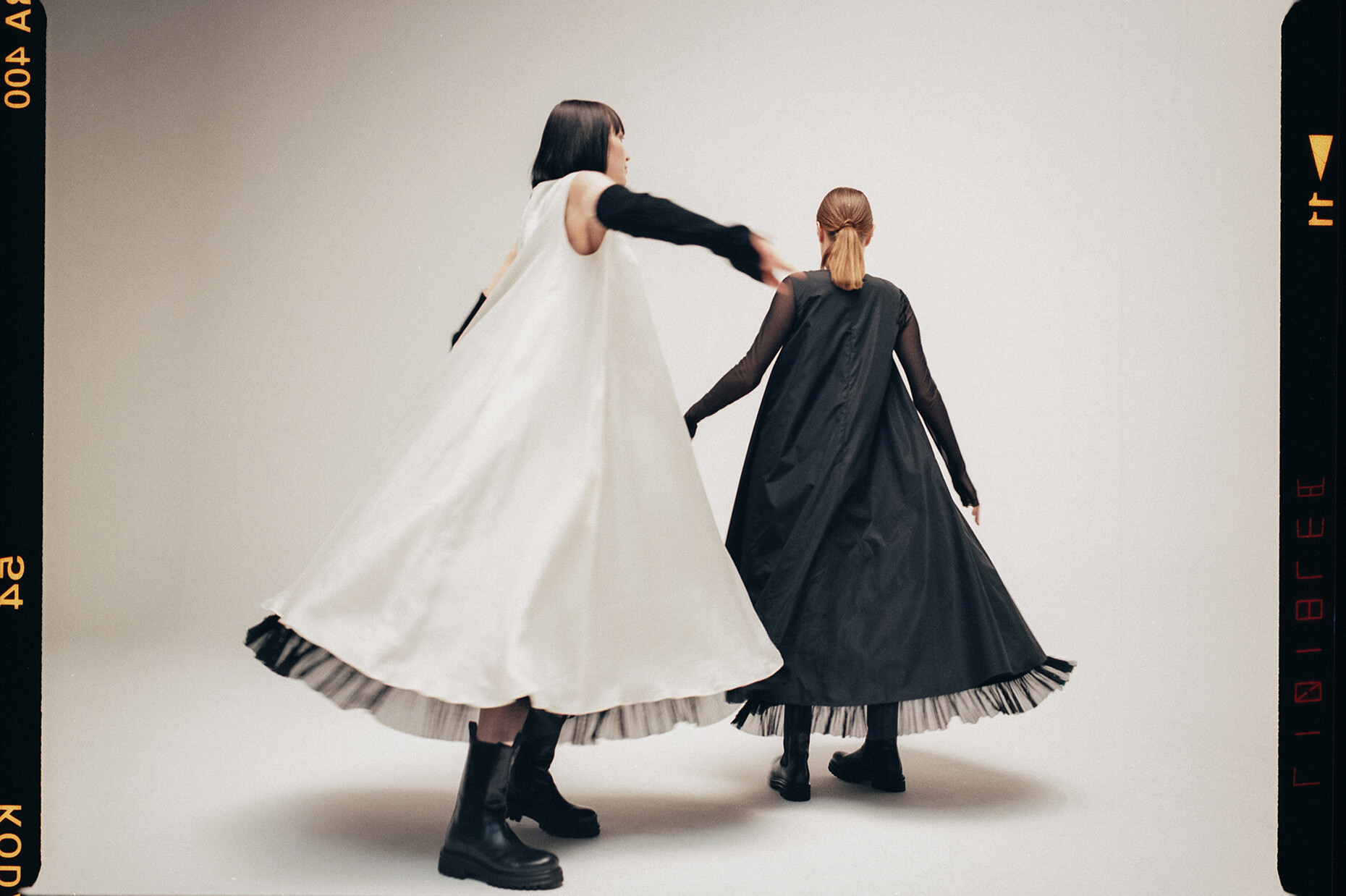Social Fashion
Katharina Hesedenz: Your career at 1C1Y began with a single T-shirt, although you were a manager at Boss, Marco Polo and Puma for many years before that.
Bernd Keller: That’s right. I knew very early on that I wanted to do fashion, although everyone else in the family was a doctor. So I studied fashion in Italy and in New York, then just took jobs – and life has been good to me. My wife works as a nurse in a kind of hospice. So at home, I have always been in charge of glamour – and she has been in charge of the social aspects. When I left Marc O’Polo in 2019 and started my own business, I started thinking about how I could somehow combine these two aspects. As a board member of Marc O’Polo, I had of course made an impact, but that accounted for maybe five percent of my time, the rest was business-related. I wanted with my own brand to go down the path of real social commitment and was very pleased when Christopher Philipp and Tom Lupo called me in the spring of 2020 after I had come to their attention through an article. They introduced me to Arthelps. In the course of further meetings, the vision gradually evolved to jointly develop a social fashion label in the luxury segment, characterized by a clear-cut aesthetic and inspired by the conviction to do good with fashion.
Tom Lupo was formerly creative director at Jung von Matt, Anna and Christopher Philipp come from a large German family of architects. They themselves are all members of the fashion label. Is that the reason why 1C1Y seems much more rounded and stylish than other charity fashion projects?
Bernd Keller: Arthelps is an initiative of creative people and artists who together help people from socially disadvantaged backgrounds in a special way: with art. I was able to build on this idea in terms of fashion. The task was: How can I, when I do something good, also create the most beautiful thing? We thought about enriching our product with inner values by means of an additional 60 euros, and decided it should address a target group of people who understand this social aspect. Now, obviously that is only feasible in the luxury segment. This is where we can act best as a group, this is where we know our stuff.
How do you define your clients?
Bernd Keller: As a designer, I learned to focus on the respective the needs of target groups such as Marc O’Polo, Hugo Boss or Hussein Chalayan for Puma and was able to grasp how their aesthetic sensibilities functioned and what their purchasing patterns were like. Surprisingly, we complement each other perfectly as a group at 1C1Y when it comes to decisions. Tom Lupo sits at the table, next to Anna Philipp, who as an architect also knows exactly who her clients are. Then there is Bernd Keller, whose heart throbs for beauty, but who basically adores the pared-back tone of a Bauhaus style and the timelessness of Marcel Breuer’s creations. I love clear lines and reduction, reduction to the essentials. Pure doesn’t have to mean no frills; what matters to me is that it catches the eye. The fabric creates the space, proportions set the frame, the focus arises during the drawing process from the key design detail. When I look back at the history of German fashion, and there are not many designers who have broken through into the international scene; however, there is Jil Sander, who highlighted a form of purism that is not poor but simple. The label we want to build is meant to span architecture, art and fashion.
With one exception, all the pieces are black. So your looks seem predestined for architects or agency heads.
Bernd Keller: From our very first meeting we all agreed that we would take purism as a basis and enhance it with beauty in materials, textures, and reflections. Smooth, slightly shimmering surfaces combined with coarse pleated mesh and semi-transparency, whereby all the volumes are large and clear. We immediately had a consensus when it came to the question of color, namely when we were discussing which colors most emphatically define our own wardrobe. Which is why we concentrate on black, and every now and then there is a neutral color such as ivory; in later collections possibly beautiful additional colors such as tobacco. However, we will always retain the above-mentioned basic elements, even if others should be added further down the road. We want to move away from a society revolving around throwaway products in favor of assembling a wardrobe that develops its own style and stance. It should not be about trends.
1C1Y calls itself "the first luxury luxury fashion label". To what extent is this claim justified?
Bernd Keller: I have been working on the issue of sustainability for 32 years and always try to go one step further. At 1C1Y - an abbreviation for 1 child, 1 year – we have taken sustainability as our basis from Day One. We don’t consider this a USP, it is simply our basic foundational conviction. On this basis, we want to combine two areas that seem diametrically opposed – namely social commitment and responsibility for our fellow human beings, on the one hand, and self-centered presentation through superficial fashion, on the other. It starts with the fact that we take social responsibility in selecting and interacting with our partners. The working conditions and social standards in all companies involved are constantly monitored and we can trace everything across the entire production chain. We use recycled or high-grade organic materials and also insist on animal welfare. At 1C1Y, the manufacturing process complies with the "Five Freedoms of Animals", an international rating scale that exposes abuse.
But the focus is actually on making children happy.
Bernd Keller: Exactly. We dare to straightforwardly state that we do social fashion because we include in the sales price a figure that is automatically allocated for a child. First of all, we don’t want to annoy customers with “be a do-gooder”. Instead, we seek to surprise them with beautiful aesthetics, with good quality that embodies a style, and only then talk about social commitment. In the end, this collaboration means that we can enjoy adorning ourselves and enjoy life because we pull the garment out of the wardrobe with a good feeling. From the sales price of each and every item, 60 euros goes to Arthelps to support one child for one year.
In other words, you accept that only the better earners can afford to buy them. And not to forget, T-shirts made of good cotton are already quite expensive.
Bernd Keller: The mission of the project is to give disadvantaged children and young people in Iraq, Ukraine, and also in Germany the chance to lead a fulfilled life. We hire social educators, we create hubs, we are currently in the process of acquiring a plot of land in Kiev. In the beginning we discussed all manner of different concepts, but in the end we found that our message is easiest and clearest to understand if we simply add 60 euros for Arthelps to the price tag.
As a buyer, I would seem to get a better price then if I buy a coat, for example. When buying a T-shirt, a surcharge of 60 euros seems disproportionately high.
Bernd Keller: We of course discussed that side to things when developing the concept. In the end, the clarity of the message was more important to us. As a consequence, we have reduced our profit margin on T-shirts, so that we earn much less on a shirt or beanie. In any case, over the next three years everything we earn is ploughed back into building 1C1Y. Economically speaking, it is not a profitable business. Of course, salaries are paid, but everything that is reaped by way of profits is immediately reinvested.
Can your fashion only be bought online? Or is it also available in concept stores?
Bernd Keller: Originally, we only wanted to sell B2C (business-to-consumer). Then we received a few enquiries from boutique owners who liked our idea – and it was a great experience. For example, there is a shop in Dortmund called Lindner Fashion. The owner contacted us, and we gave her pieces on consignment. When she presented the collection live in the shop, one of our employees was there and she was really impressed. A real lot of customers showed up and bought our products. In fact, the shop staff was only able to explain to them on the way to the checkout that the whole thing hinged on a social idea – and they were supporting a child. These people bought because they liked the aesthetic - and only subsequently found out that they had done something good. I think that’s great. Ideally, our consumer society would always function in such a way that we buy because we find something beautiful, but at the same time support a whole project. I’d be happy for us to be a lighthouse project in consumer society.
In an interview you once said: “Action speaks louder than words.”
Bernd Keller: If you listened to that interview, then you also know that I lost a lot of money with my own start-up True Standard three years ago, essentially everything I’d earned in the 30 years prior to it. An investor suddenly jumped ship in November 2019, the new virus hit in December, and I had to file for bankruptcy. I paid off five employees and every producer, even though I was not under an obligation to do so. Now I am working with them again for 1C1Y and the label is benefiting. We have such good suppliers and producers because they all know me.
Does that encourage you to stick all the more firmly to your values in this job?
Bernd Keller: Of course, everyone noticed the honesty and fairness. Otherwise, I doubt we’d be able to on-board these producers now that everything is different. They now only work with bulk buyers and no longer accept new start-ups. The fact that we still work together successfully stems from the fact that we understand each other at all levels. Honesty, sustainability, and reliability in terms of money are the planks on which we all rely.
What does the cooperation in the creative domain look like? Do the Philipps or Tom Lupo help decide what the collection should look like?
Bernd Keller: Each of us decides according to his or her particular professional expertise. If you want to make good fashion, you can’t let too many people have a say. I am ultimately responsible for the collection because otherwise there would be no common thread. But the collaboration is also characterized by my curiosity, for example when Tom Lupo introduces new ideas or when Anna inspires us in the form of architecture and buildings. We have a design camp at my place in Bamberg, in my little studio, where everyone provides impulses. My color concept and my range plan are the product of that design day, then Christopher Philipp joins us to handle the business side to things. It’s a great way to work. Sometimes you go out exhausted because it was such a full day, and yet somehow still have the energy to do great things because you feel so full of inspiration. The new summer collection is entitled “Workers of Hope”. We also want to stimulate others and say “Do something!”. There’s no point always feeling demoralized and small. Even if politics is not getting us anywhere right now, you can still make a difference in small ways.
How many pieces are there in the new collection?
Bernd Keller: 25 – and we want to keep it that way. As a new element, we have added a unisex section. This is not motivated by a gender discussion, but driven by fashion, because I am convinced that women look more sexy in a cool oversize piece, which actually comes from the men’s wardrobe, than casually in a little black dress. Of course, men’s items have to please and fit the man, but we do the fitting so that women can also wear them and feel comfortable in them. That has a lot to do with details and proportions. But it’s important for me to say that it doesn’t work the other way round. We don’t make semi-transparent mesh T-shirts for men, that’s not our thing.
We all know how important brand ambassadors are for a brand. Do you want artists to provide the testimonials or would you prefer architects?
Bernd Keller: We work with brand ambassadors from different areas, from fashion to show business. Anna Philipp is the representative in the field of architecture; Michael Patrick Kelly comes from the music industry, as does Rose May Alaba, David Alaba's sister, who makes Afrobeats. Then there is Samuel Koch, a fantastic actor and a great person. We are currently preparing a project in Senegal with male model Alpha Dia.
What economic benchmark do you want to achieve within the next three years?
Bernd Keller: 1C1Y is a start-up that has to be standing on its own two feet within the space of three years. There is no immensely rich investor, but architectural practice Philipp is our patron at the moment. We need to make sure that over the next three years the big cost items more or less get paid so that the project can grow at some point. Of course, we all look very, very closely at our budgets to make sure that the costs are sustainable, we can’t simply go the whole hog. Sometimes I feel fear when I see the numbers. Fortunately, we are gaining more and more supporters. Alpha Dia was not our brand ambassador from the beginning. We asked him if he wanted to do a photo shoot with us and because he liked the idea, he agreed. We were in the studio in Munich taking pictures and he said of his own accord: This is different, I’ll join in! There are the Pradas and the Bosses of this world who put 80 million euros into a fashion shoot and then check the clicks it generates. And there’s us, driven by a social commitment and a love of aesthetics. That’s our opportunity!


